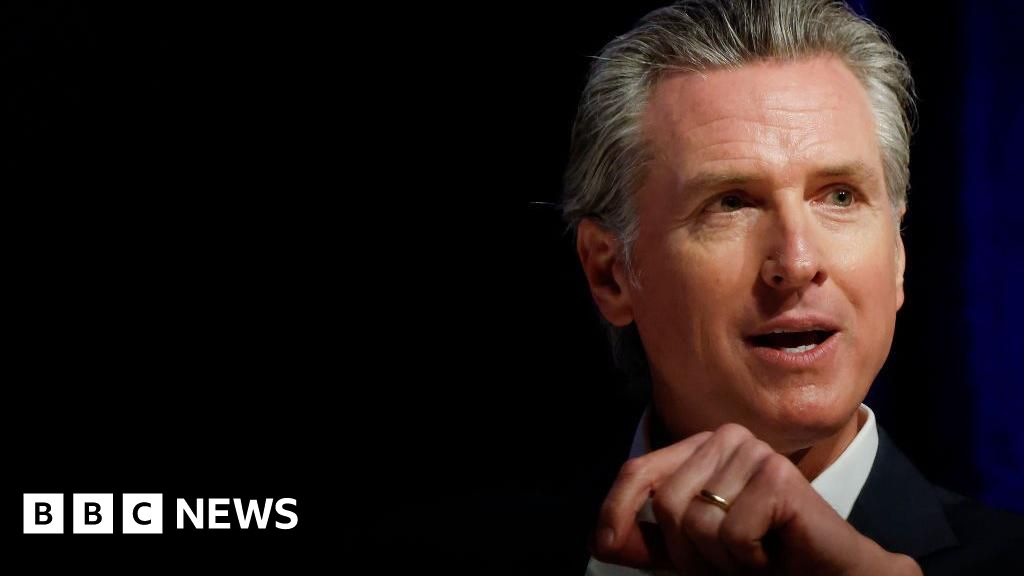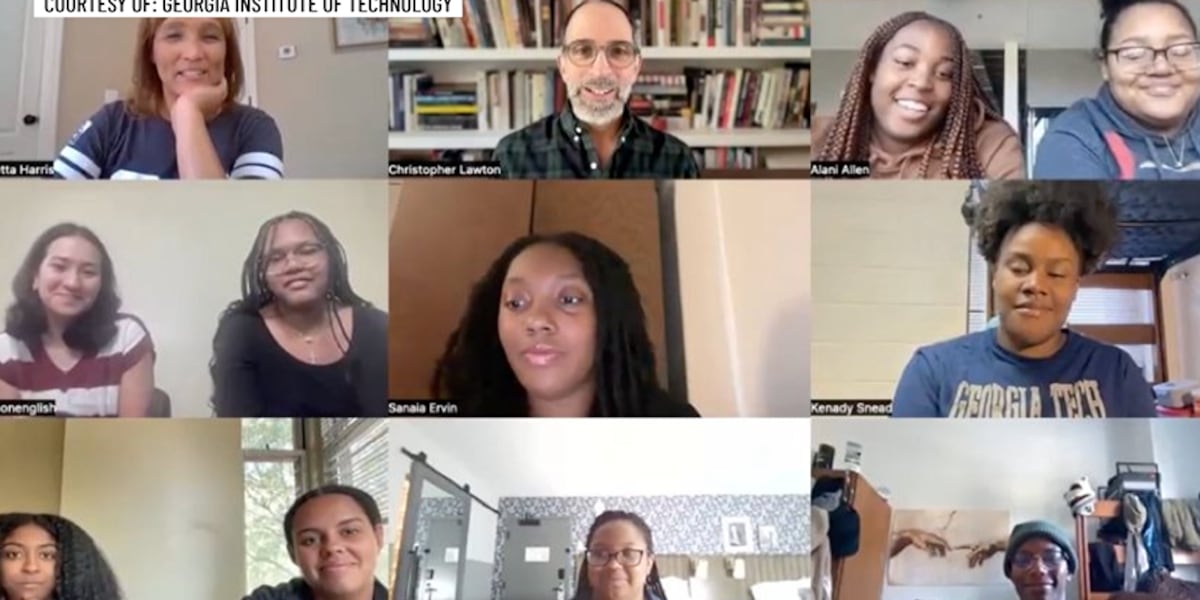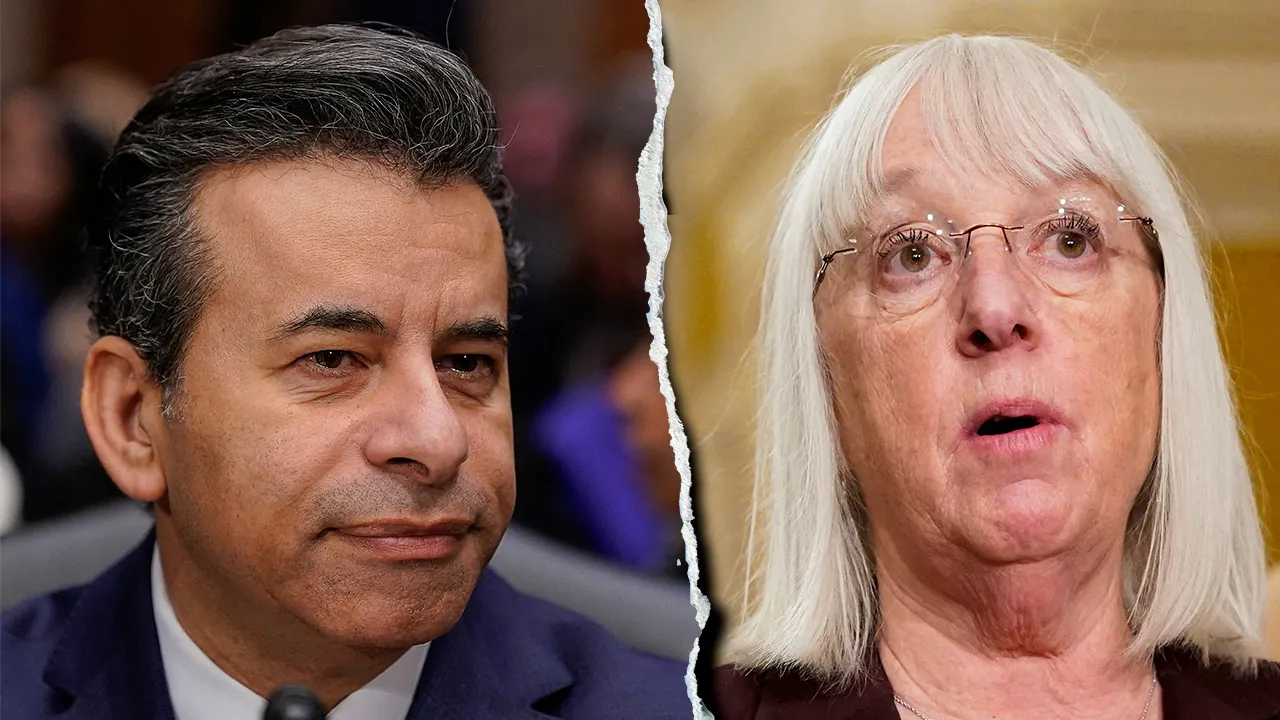Health
Lung cancer pill shows ‘earth-shattering’ results in 5-year study: ‘An optimistic time’
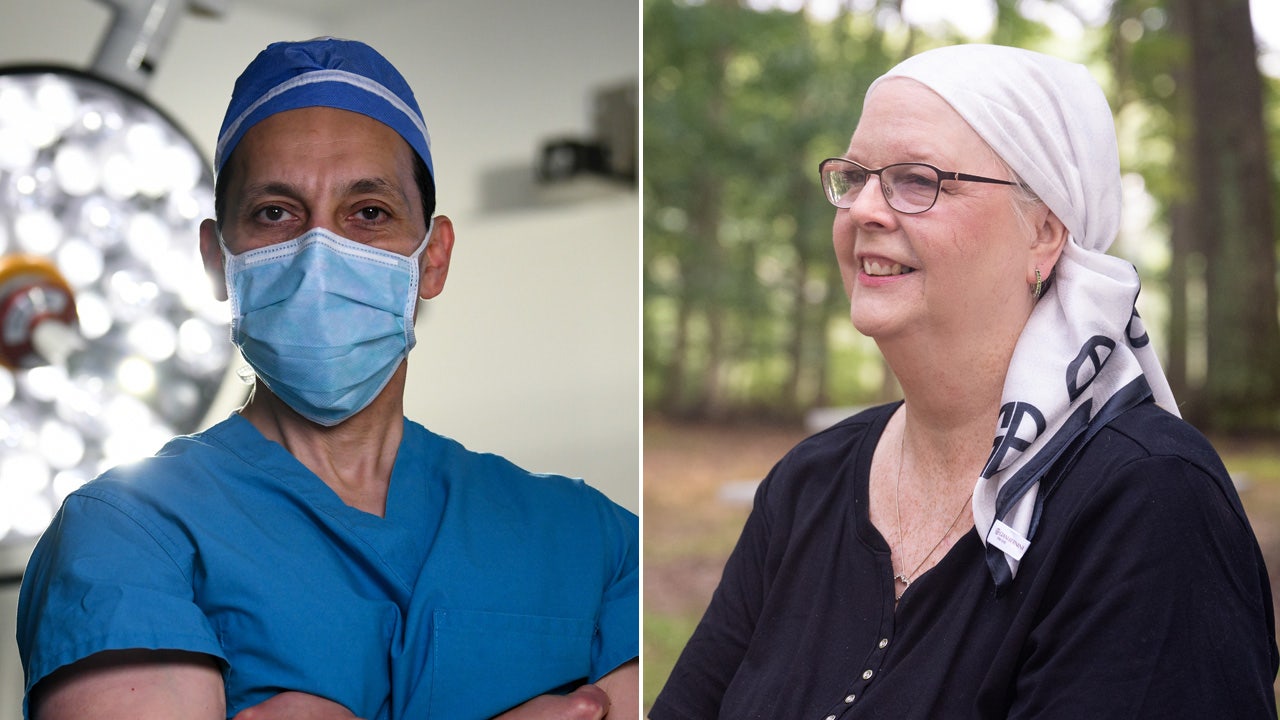
Many lung cancer patients now have access to a potentially life-saving medication.
Osimertinib, sold under the brand name Tagrisso, is available to patients with Stage 1B-3A lung cancer who have a certain genetic mutation and have had surgery to remove cancerous tumors.
Among those patients, Tagrisso was shown to reduce the five-year risk of recurrent cancer by up to 73% and the risk of death by up to 51%, according to research published in The New England Journal of Medicine over the summer.
SHOULD YOU BE SCREENED FOR LUNG CANCER BASED ON NEW GUIDELINES FOR HIGH-RISK PATIENTS?
“In the world of oncology, that is earth-shattering,” Dr. Faiz Y. Bhora, chief of thoracic surgery and central region chair of surgery at Hackensack Meridian Health in New Jersey, told Fox News Digital.
“In the past, medical oncologists were happy with 5% or 10% — and now we’re talking about in excess of 50% improvement in survival.”
Dr. Faiz Y. Bhora, chief of thoracic surgery and central region chair of surgery at Hackensack Meridian Health in New Jersey (left), treated Kim Mosko, 67 (right), who is taking Tagrisso after surgery to remove a cancerous tumor. (Hackensack Meridian Health)
Bhora, who has prescribed the medication to several of his lung cancer patients, spoke about the “groundbreaking” results he’s seen in his own practice.
“We’re truly in the era of personalized medicine,” Bhora also told Fox News Digital. “We now have a lot of targeted therapies that work well for patients who have mutations in their tumors.”
LUNG CANCER: TYPES, SYMPTOMS AND TREATMENT OPTIONS
For this particular medication, patients who have a genetic mutation called EGFRm — and who have already had surgery — are viable candidates for Tagrisso.
“The pill helps prevent recurrence once the tumor is removed with surgery for those with the genetic marker,” he said.

Dr. Faiz Y. Bhora (left) and his team prepare for surgery. “We have perhaps the most outstanding team of thoracic surgeons, who can perform the most complex operations robotically,” he told Fox News Digital. (Hackensack Meridian Health)
Patients with stage 4 lung cancer are also eligible for the pill if they have the EGFR mutation, even without having had surgery, the doctor noted.
To determine if a patient has the mutation, a tissue sample is extracted from the tumor and tested. Results are typically obtained within 10 to 14 days.
A blood test is also available, Bhora said, with those results available within five to 21 days.
“We used to think of lung cancer as just a smoker’s illness. Now, we know that over 30% of individuals who develop lung cancer have never smoked.”
“I would say about 25% of patients with lung cancer end up having an ETFR mutation,” the doctor estimated.
Around 238,000 new cases of lung cancer are expected in 2023, according to the American Cancer Society (ACS), along with some 127,000 deaths.

Dr. Faiz Y. Bhora is pictured during surgery. “Even with some stage 4 patients, we try to treat with systemic therapy first, and if there is residual disease we go in surgically to remove what’s left,” he said. (Hackensack Meridian Health)
“We used to think of lung cancer as just a smoker’s illness,” Bhora said. “Now, we know that over 30% of individuals who develop lung cancer have never smoked, and a lot of them are women.”
Looking ahead, he hopes to be able to prescribe the pill soon to patients upfront, before any other procedures or therapies, with the goal of shrinking tumors prior to surgery.
A patient’s story
Kim Mosko, 67, was diagnosed with stage 2A lung cancer in February 2023.
The mother of two had robotic surgery at Hackensack Meridian just a couple of weeks later.

Kim Mosko, 67, has been taking Tagrisso for 3½ months. “Overall, my experience has been positive, and I am grateful that this medication is available,” she said. (Hackensack Meridian Health)
“The lobectomy was performed by robotic surgery and was an incredible experience,” she told Fox News Digital. “I owe all the doctors I see and consulted with a debt I can never repay.”
Next, she had four rounds of chemotherapy, which she completed at the end of June 2023.
“I absolutely believe that this medication is going to make sure the lung cancer will not return. I am planning on living for many more years.”
When Mosko’s doctors determined in July that she has the genetic mutation, they recommended that she take Tagrisso.
“I needed no persuasion at all,” she told Fox News Digital. “I will do whatever is necessary to treat this cancer and lengthen my lifespan.”

When Mosko’s doctors recommended that she take Tagrisso, “I needed no persuasion at all,” she told Fox News Digital. “I will do whatever is necessary to treat this cancer and lengthen my lifespan.” (Hackensack Meridian Health)
Mosko has now been taking Tagrisso for 3½ months, with plans to continue taking it daily for three years.
Her insurance covers the cost of the medication.
“Overall, my experience has been positive, and I am grateful that this medication is available,” she said.
TWO NEW CANCER PILLS SHOW ‘UNPRECEDENTED’ RESULTS IN BOOSTING SURVIVAL RATES AND PREVENTING RECURRENCE
She has experienced some side effects, such as a skin rash, diarrhea and fatigue, “all of which are manageable,” Mosko said.
“I don’t need to have hope,” she added. “I absolutely believe that this medication is going to make sure the lung cancer will not return. I am planning on living for many more years.”
Where to start
For lung cancer patients interested in Tagrisso, Bhora recommends seeing an experienced team of physicians to get tested for the genetic mutation.
At Hackensack, Bhora said, “we consider every patient a candidate for a cure.”

“This is a very optimistic time for patients who used to have what was universally considered a fatal disease,” Bhora said. (Hackensack Meridian Health)
With the advent of personalized therapies, he believes there is hope on the horizon for many lung cancer patients.
CLICK HERE TO SIGN UP FOR OUR HEALTH NEWSLETTER
“This is a very optimistic time for patients who used to have what was universally considered a fatal disease,” Bhora said.
“We are now in an era where in a vast majority of cases, we can either turn it into a chronic disease or aim for a complete cure.”
“We are now in an era where in a vast majority of cases, we can either turn it into a chronic disease or aim for a complete cure.”
Safety information
AstraZeneca, the maker of Tagrisso, indicates on its website that some side effects have been reported.

The logo for AstraZeneca is seen outside its North America headquarters in Wilmington, Delaware, March 22, 2021. AstraZeneca is the maker of Tagrisso. (REUTERS/Rachel Wisniewski/File Photo)
The most common of those include low white blood cell counts; low platelet counts; diarrhea; low red blood cell counts (anemia); rash; muscle, bone, or joint pain; mouth sores, fatigue, cough, dry skin; and changes in the fingernails, including redness, tenderness, pain, inflammation, brittleness, separation from the nailbed and shedding of the nail.
Although rare, some potentially serious side effects may affect the lungs, heart, eyes, skin, and blood and bone marrow.
Patients who experience bothersome or long-lasting side effects should consult with their health care provider, AstraZeneca states.
They can also report any side effects to the U.S. Food & Drug Administration (FDA) by calling 1-800-FDA-1088.
For more Health articles, visit www.foxnews.com/health.

Health
A Skeptical G.O.P. Senator Makes His Peace With Kennedy

Perhaps no vote was as agonizing for Senator Bill Cassidy, the Louisiana Republican and medical doctor, than his vote to confirm Robert F. Kennedy Jr. as President Trump’s health secretary. Mr. Cassidy wondered aloud for days how Mr. Kennedy, the nation’s most vocal and powerful critic of vaccinations, might handle an infectious disease crisis.
Now, as a measles outbreak rages in West Texas, Mr. Cassidy has found out. It all comes down, he said, to “the gestalt.”
On Monday, days after the Texas outbreak killed an unvaccinated child, Mr. Cassidy, the chairman of the Senate Health Committee, was clipping down a Capitol corridor when he was asked about Mr. Kennedy. He pointed to a Fox News Digital opinion piece in which Mr. Kennedy advised parents to consult their doctors about vaccination, while calling it a “personal” decision.
“That Fox editorial was very much encouraging people to get vaccinated,” he said.
Reminded that Mr. Kennedy had described it as a personal choice, Mr. Cassidy thought for a moment. “If you want to like, parse it down to the line, you can say, ‘Discuss with your doctor,’” Mr. Cassidy said. “He also said, ‘We’re making vaccinations available. We’re doing this for vaccination. We’re doing that for vaccination.’ So if you take the gestalt of it, the gestalt was, ‘Let’s get vaccinated!’”
Mr. Cassidy’s assessment — that the whole of Mr. Kennedy’s message was more than the sum of its parts — reflects how the measles outbreak has put a spotlight on how Mr. Trump’s unorthodox choice to run the country’s top health agency has brought a once-fringe perspective into the political mainstream, creating discomfort for some Republicans.
As the founder and chairman of his nonprofit, Children’s Health Defense, and later as a presidential candidate, Mr. Kennedy has repeatedly downplayed the benefits of vaccination. He has also repeatedly suggested that the measles, mumps and rubella vaccine causes autism, despite extensive research that has found no link.
Since winning Trump’s nod to head the sprawling Department of Health and Human Services, Mr. Kennedy has walked a careful line on the issue. Some of his recent statements, in which he stops short of denouncing vaccines, have angered some of his supporters. But his less than full-throated endorsement of vaccination, and his promotion of alternative remedies to treat measles, have angered mainstream scientists who say the one proven way to prevent measles is the vaccine.
“This, I would say, is the barest of the bare minimum that one can do in the middle of a measles outbreak,” said Dr. Adam Ratner, a New York City pediatrician who just published a book, “Booster Shots,” that warns of a measles resurgence.
But Del Bigtree, Mr. Kennedy’s former communications director and one of his closest allies, said Mr. Kennedy was doing exactly what he said he would do: putting all options on the table and letting parents decide for themselves.
He used the word “balance” to describe Mr. Kennedy’s approach, and said the media was being “incredibly disingenuous and in some ways alarmist and dangerous by creating a panic over a death from measles.”
Asked about Mr. Cassidy’s “gestalt” remark, Andrew Nixon, a spokesman for the department, referred back to the Fox opinion piece. He said the health secretary’s comment could speak for itself: “Vaccines not only protect individual children from measles, but also contribute to community immunity, protecting those who are unable to be vaccinated due to medical reasons.”
Mr. Cassidy, a liver specialist, made his career in medicine treating uninsured patients as a doctor in Louisiana’s charity hospital system. He is a fierce proponent of vaccines.
But he is also facing a Republican primary challenger in 2026, and voting against Mr. Kennedy risked prompting Mr. Trump to endorse his opponent — and sparking a potential backlash among an increasingly vaccine-skeptical G.O.P. electorate.
Mr. Kennedy’s “medical freedom” movement, which he calls “Make America Healthy Again,” is now deeply entrenched in the Republican Party. The coronavirus pandemic turned many conservatives against vaccine mandates, even for children attending school. Around the country, nearly 1,000 candidates, nearly all Republican, ran for elective office in November with the backing of Stand for Health Freedom, a Florida nonprofit that has pushed to make it easier for parents to opt out of school vaccine requirements.
For Mr. Cassidy and other Republicans who were uneasy about Mr. Kennedy, the situation in West Texas is forcing a reckoning, said Whit Ayres, a Republican strategist who is also a member of Rotary International, an organization that has set a goal of ending polio by promoting vaccination around the world.
“His position on vaccines was exceedingly well known when he was nominated, and when he was confirmed by the United States Senate,” Mr. Ayers said. “Everybody, with their eyes open, knew that his positions could lead to a resurgence of measles.”
As vaccination rates have dropped around the country, public health experts have warned that measles would be the first infectious disease to come back. But the Texas measles outbreak cannot be blamed on Mr. Kennedy. The disease began spreading within the Mennonite community, an insular Christian group that settled in West Texas in the 1970s; many Mennonites are unvaccinated and vulnerable to the virus.
Mr. Kennedy minimized the situation in Texas during a Cabinet meeting with Mr. Trump last week, saying measles outbreaks in the United States are “not unusual.” His Fox opinion piece promoted the use of vitamin A, which studies have shown is useful in treating measles in malnourished children.
He followed up with a prerecorded Fox News interview that aired on Tuesday, in which he said parents and doctors should consider alternative approaches, including cod liver oil, for the treatment of measles. He also acknowledged that vaccines “do prevent infection.” But once again, Mr. Kennedy did not urge Americans to get vaccinated.
The Texas Department of Health issued a health alert on Jan. 23 reporting two cases of measles. Since then, nearly 160 people have contracted the illness and 22 have been hospitalized. The Centers for Disease Control and Prevention said Tuesday that it had sent some of its “disease detectives” to Texas to support local officials in the response.
By Wednesday, while Mr. Cassidy appeared satisfied with Mr. Kennedy’s handling of the matter, the senator was pushing another key health nominee on questions of measles, vaccines and autism.
He wanted to know whether Dr. Jay Bhattacharya, appearing before the Senate health committee for his confirmation hearing as Trump’s pick to lead the National Institutes of Health, intended to spend tax dollars on research into the discredited theory that vaccines cause autism. Mr. Cassidy had repeatedly, and unsuccessfully, tried to get Mr. Kennedy to reject that theory in his own confirmation hearing.
Dr. Bhattacharya told the senator he was “convinced” that there is no link between the measles vaccine and autism. But like Mr. Kennedy, he said he supported additional research, if only to assuage the fears of nervous parents.
Mr. Cassidy was incensed, saying the matter had already been settled by years of extensive research. New studies, he said, would waste taxpayer dollars and take away money from studies that might uncover the true causes of autism. He pounded his fist on the table.
“If we’re pissing away money over here,” he said with a wave of his hand, “that’s less money that we have to actually go after the true reason.”
And in any event, Mr. Cassidy said, further research would not change minds. “There’s people who disagree that the world is round,” he said, adding, “People still think Elvis is alive.”
To secure Mr. Cassidy’s vote last month, Mr. Kennedy made a series of concessions, which Mr. Cassidy outlined in a Senate floor speech. They included a pledge not to disband the committee of experts that advises the Centers for Disease Control and Prevention on vaccines, and to leave intact statements on the C.D.C.’s website saying that vaccines do not cause autism.
Mr. Kennedy also promised to have an “unprecedentedly close collaborative working relationship” with Mr. Cassidy, and to meet or speak with him “multiple times a month,” and to give Congress advance notice of any vaccine policy changes.
“I will carefully watch for any effort to wrongfully sow public fear about vaccines between confusing references of coincidence and anecdote,” Mr. Cassidy said then.
On his way into the Senate chamber on Monday, he said he thought Mr. Kennedy was doing a good job with the Texas response. “He’s handling it well,” the senator said. He was asked if he had spoken to Mr. Kennedy about the measles outbreak.
“We speak on a regular basis,” Mr. Cassidy said, adding: “Let’s leave it at that.”
Health
Obesity will affect over half of adults in 25 years, study predicts
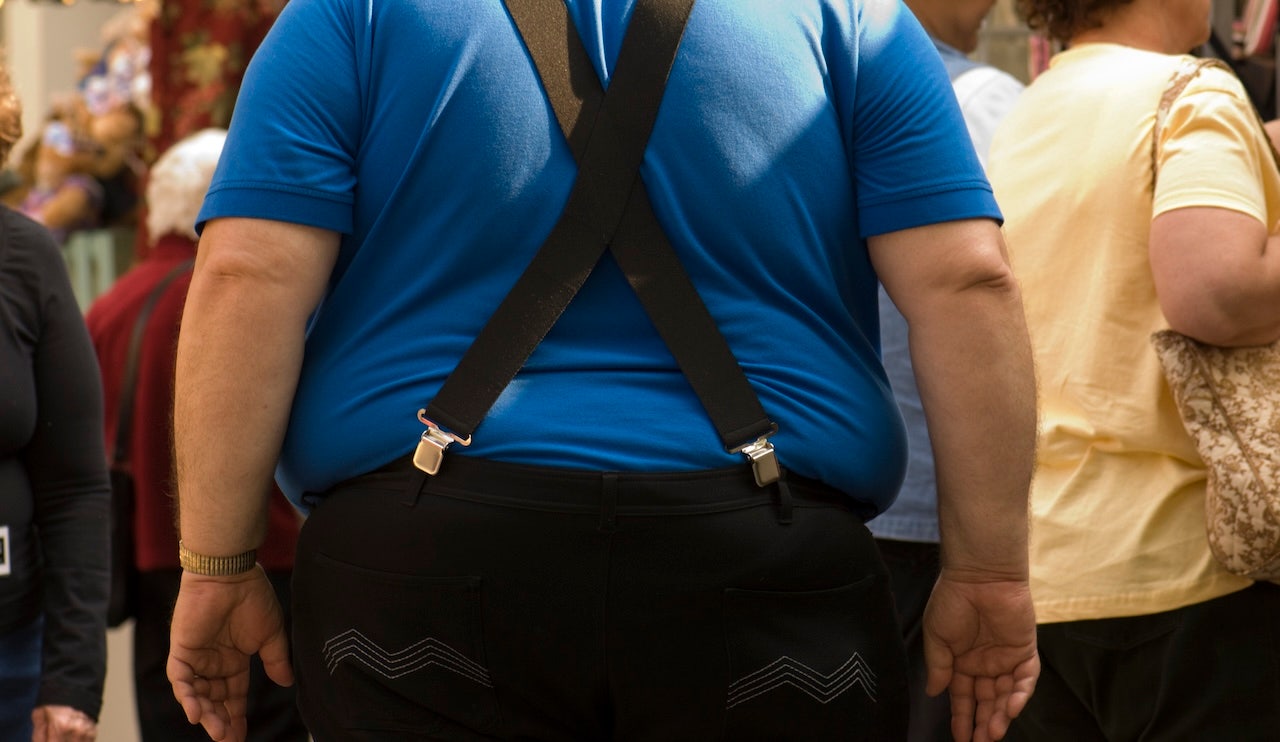
Obesity has long been classified as a global epidemic — and new data published in The Lancet journal spotlights how much worse it could get.
A team of researchers found that in 2021, one billion men and 1.11 billion women over 25 years of age worldwide qualified as overweight or obese — twice as many as in 1990.
In 2021, more than half of the world’s overweight and obese adults lived in eight countries: China (402 million), India (180 million), the U.S. (172 million), Brazil (88 million), Russia (71 million), Mexico (58 million), Indonesia (52 million), and Egypt (41 million), according to a press release.
THIS DISEASE KILLS MORE PEOPLE THAN ALL CANCERS AND ACCIDENTS COMBINED
If the increase continues at this same pace, the study projects that more than half (57.4%) of men and 60.3% of women will be overweight or obese by 2050.
In 2021, one billion men and 1.11 billion women over 25 years of age worldwide qualified as overweight or obese — twice as many as in 1990. (iStock)
The three countries expected to have the highest rates of overweight or obesity by 2050 are China (627 million people), India (450 million) and the U.S. (214 million).
The study also found that by 2050, nearly one-quarter of obese adults will be 65 or older.
The researchers analyzed data from the Global Burden of Diseases, Injuries, and Risk Factors Study, spanning 204 countries and territories.
OZEMPIC’S HEALTH BENEFITS KEEP GROWING, BUT ARE THE RISKS WORTH IT?
“The unprecedented global epidemic of overweight and obesity is a profound tragedy and a monumental societal failure,” said lead author Professor Emmanuela Gakidou from the Institute for Health Metrics and Evaluation (IHME), University of Washington, in the release.
“Governments and the public health community can use our country-specific estimates on the stage, timing and speed of current and forecasted transitions in weight to identify priority populations experiencing the greatest burdens of obesity who require immediate intervention and treatment, and those that remain predominantly overweight and should be primarily targeted with prevention strategies.”

The three countries expected to have the highest rates of overweight or obesity by 2050 are China (627 million people), India (450 million) and the U.S. (214 million). (iStock)
Another finding was that “more recent generations are gaining weight faster than previous ones and obesity is occurring earlier.”
This increases the risk of younger people developing obesity-related conditions like type 2 diabetes, high blood pressure, cardiovascular diseases and multiple cancers.
“The world has two choices: Act aggressively now or pay an unfathomable price later.”
There were some limitations to the study, the researchers acknowledged.
“Predictions are constrained by the quantity and quality of past data as well as systemic biases from self-reported data, which are likely to remain despite attempts to correct for bias,” they wrote.
They also noted that the definition of overweight and obesity is based on BMI (body mass index), “which does not account for variations in body structure across ethnic groups and subpopulations.”
The study also did not take into account the effects of GLP-1 anti-obesity medications and other interventions.

If cases rise to the study’s projections by 2050, a doctor warned that “obesity-related diseases will cripple healthcare systems worldwide.” (iStock)
Brett Osborn, a Florida neurosurgeon and longevity expert at Senolytix, called out obesity as the “single greatest modifiable threat to longevity, economic stability and national security.”
“Yet, instead of confronting the problem head-on, our culture continues to coddle bad habits, normalize obesity and abandon personal responsibility,” he said in a statement to Fox News Digital.
WEIGHT LOSS MAY BE HELPED BY DRINKING THIS, STUDY SUGGESTS
“This crisis is not about food deserts genetics or corporate greed — it’s about choices. And we are making the wrong ones.”
The obesity crisis can be linked to sedentary lifestyles, ultraprocessed foods and an “entitlement mentality that demands a pill for every problem,” according to Osborn.

The obesity crisis can be linked to sedentary lifestyles, ultraprocessed foods and an “entitlement mentality that demands a pill for every problem,” according to one doctor. (iStock)
“The reality is simple: Obesity is caused by caloric surplus and a lack of movement,” he said. “When you consistently eat more calories than you burn, you gain weight. Period.”
If cases rise to the study’s projections by 2050, Osborn warned that “obesity-related diseases will cripple healthcare systems worldwide.”
CLICK HERE TO SIGN UP FOR OUR HEALTH NEWSLETTER
“The recent Lancet study projects over 1.3 billion global diabetes cases and more than two million obesity-driven cancers annually,” he said. “Cardiovascular disease will double in prevalence across multiple regions, and the economic burden will exceed $4 trillion per year. This is unsustainable.”
“Our healthcare system was never designed to support a world where over half the population has a preventable, self-inflicted disease.”

“The time to fight obesity — relentlessly and unapologetically — is now.” (iStock)
The fight against obesity isn’t about aesthetics, Osborn said — “nor is this a personal affront to overweight or categorically obese people. This is about survival.”
“The world has two choices: Act aggressively now or pay an unfathomable price later,” he went on.
“The time to fight obesity — relentlessly and unapologetically — is now.”
For more Health articles, visit www.foxnews.com/health
The study was funded by the Bill & Melinda Gates Foundation. It was conducted by the GBD 2021 Adolescent and Adult BMI Collaborators. Fox News Digital reached out to the researchers for comment.
Health
Digging Out of a Therapy Rut

Therapy has been a part of Katerina Kelly’s weekly routine since elementary school, when a teacher suggested counseling for the 8-year-old.
At the time, Katerina’s autism was affecting their ability to manage time, make decisions and socialize. And for many years, the therapist seemed helpful. But once college rolled around, things changed.
“I always left counseling feeling either worse than I started — or numb,” said Mx. Kelly, 29, who lives in Natick, Mass, and uses they/them pronouns.
The skills that Mx. Kelly’s therapist had taught her in childhood weren’t translating as well now that she was older. In other words, they had hit a rut — the therapy, and the therapist, were not producing the desired results.
A therapy rut can feel disheartening, but it doesn’t have to end your pursuit of better mental health. We asked psychologists how to identify whether you’ve reached a sticking point and what to do about it.
What exactly is a therapy rut?
If you’ve hit a rut, you may feel as if your therapy sessions have stalled or become unhelpful, said Jameca Woody Cooper, president of the Missouri Psychological Association.
You may be emotionally disconnected from your therapist or less trusting of their plan. Perhaps you’re uncomfortable and tense during therapy, or you’ve started to dread or miss appointments, Dr. Woody Cooper added.
A rut can translate into “increased irritability while you’re in session, or a feeling of being misunderstood,” she said.
There are many reasons a rut can happen, the experts said:
-
You’ve made as much progress as you can in therapy at this time.
-
You would benefit from a different therapist or approach.
-
You need a new therapy goal.
-
You don’t need sessions as frequently as you did in the past.
-
Your expectations aren’t aligned with those of your therapist.
-
You’re not ready to explore past trauma or a difficult issue.
Mx. Kelly had experienced some of these roadblocks in her relationship with her childhood therapist.
“When I did try to bring up new things I was told we could work on it in the ‘next session,’ but that never came to be,” they said. “I hit a point where I started feeling so low.”
So Mx. Kelly began searching for a new therapist — it took more than six months, but they found someone who took their insurance and was a better fit.
If you’re feeling stuck, your therapist will ideally sense it too, said Regine Galanti, a therapist in Long Island who specializes in treating anxiety with exposure therapy.
“When I’m having the same conversations for more than two weeks in a row — that makes my warning bells start to go off,” she said.
That’s when it’s time to re-evaluate a client’s therapy goals, she added.
What can you do about a rut?
Don’t jump the gun by quitting therapy after one or two unproductive sessions, experts said.
“It’s unfortunately not uncommon to occasionally have a therapy session that feels like a dud,” said Alayna Park, an assistant professor of psychology at the University of Oregon.
But if after three or four sessions you feel like you haven’t learned any new coping skills or gained a better understanding of your problem, then it’s time to speak up, either during the session or in an email.
Dr. Park suggested a few ways to kick off the discussion: “I feel like my progress has stalled,” or “I would like to transition to learning new or different coping skills,” or simply: “I feel like I’m in a therapy rut.”
It’s also valuable to ask your therapist how many sessions you might need, what your progress ought to look like and how your therapist is measuring it, said Bethany A. Teachman, a professor of psychology and the director of clinical training at the University of Virginia.
Although it can make some people feel uneasy to voice their concerns, the experts said, a good therapist will not get angry or annoyed.
“Good therapy empowers patients” to do hard things, Dr. Teachman said.
How do you know if it’s time to take a break?
If you’ve talked with your therapist about your concerns and nothing has changed, you may want to consider taking a break.
Stepping away can offer “a sense of agency, and time to evaluate if the current therapeutic relationship is the correct one,” Dr. Woody Cooper said.
During this break, you can take time to think about your feelings and behavior, explore different types of therapy or try out another therapist, she added.
Annie Herzig, an author and illustrator who lives in Fort Collins, Colo., decided to take a step back after a few months of seeing a new therapist, when she hadn’t noticed any improvement in her mood.
Ms. Herzig, 43, finally sent her therapist an email saying she wasn’t getting what she needed from their sessions.
Taking time away was helpful — Ms. Herzig found a different therapist who she has now been seeing for four years.
“I feel energized at the end,” Ms. Herzig said of their sessions together. “Even if I cry my eyes out.”
-

 Sports1 week ago
Sports1 week agoNHL trade board 7.0: The 4 Nations break is over, and things are about to get real
-

 News1 week ago
News1 week agoJustice Dept. Takes Broad View of Trump’s Jan. 6 Pardons
-

 World1 week ago
World1 week agoHamas says deal reached with Israel to release more than 600 Palestinians
-

 Science1 week ago
Science1 week agoKilling 166 million birds hasn’t helped poultry farmers stop H5N1. Is there a better way?
-

 News1 week ago
News1 week agoChristianity’s Decline in U.S. Appears to Have Halted, Major Study Shows
-

 World1 week ago
World1 week agoGermany's Merz ‘resolute and determined,' former EU chief Barroso says
-

 Technology1 week ago
Technology1 week agoMicrosoft makes Copilot Voice and Think Deeper free with unlimited use
-

 Culture1 week ago
Culture1 week agoOstriches, butt cheeks and relentless energy: How Austin Hedges became an indispensable MLB teammate
